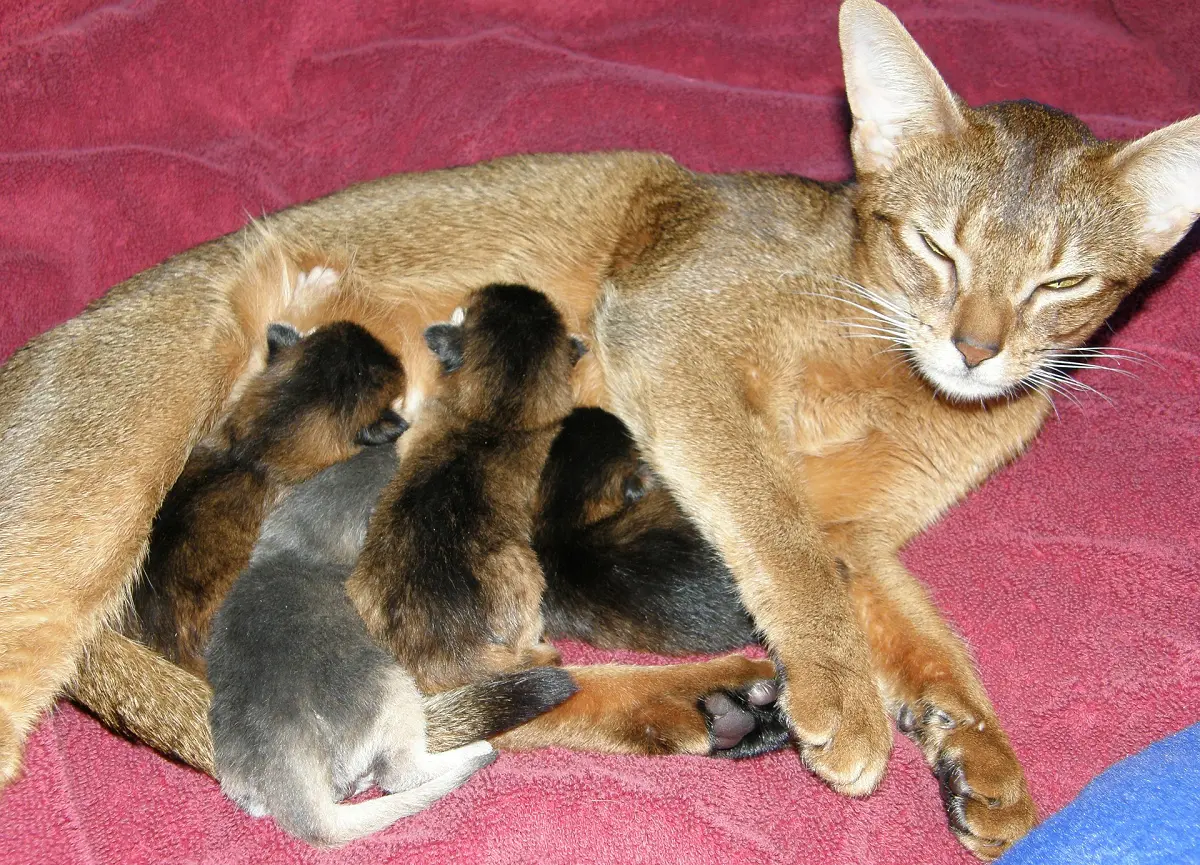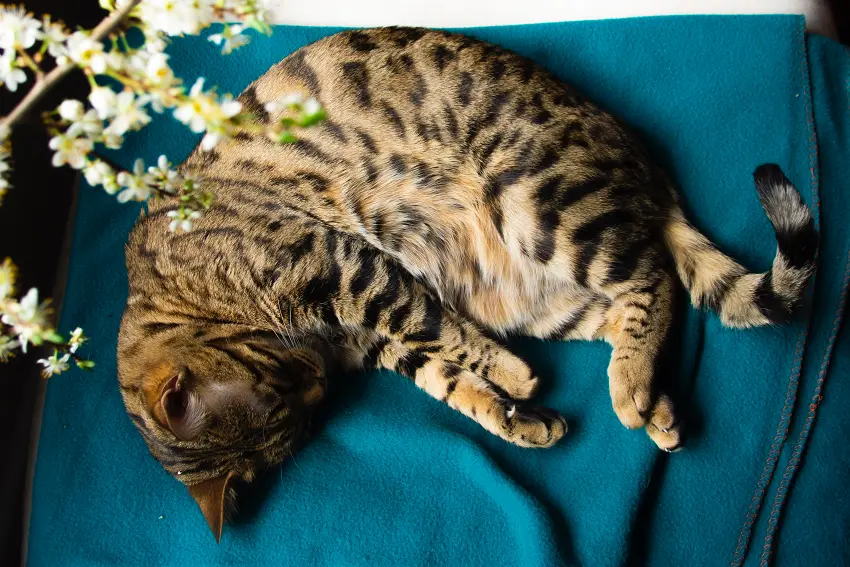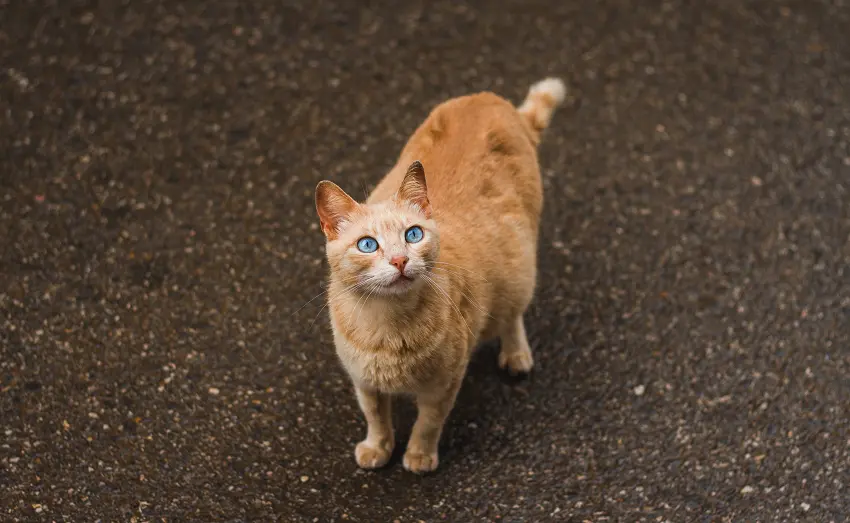How To Tell If Cat Still Has Kittens Inside: 7 Signs To Look For
Most cat births go off without a hitch. However, some owners are faced with the dilemma of knowing how to tell if cat still has kittens inside.
It’s crucial to tell whether your cat is done giving birth or if a kitten is still stuck inside. This way, you can bring your cat to the vet’s clinic for an emergency C-section if need be.

Below, I will discuss a few steps you can take to know whether there’s still a kitten stuck inside your pet’s tummy. Just remember that this information is based on my experience as a pet owner, which isn’t a replacement for professional veterinary advice.
How will I know if my cat still has kittens inside?
If you’re unsure whether your cat has pushed all the kittens out or not, you should look for these signs:

1. Your cat is still crying and pushing.
Your cat will keep straining and crying if there’s still a kitten inside its uterus. This is due to the pain of labor and the feline’s effort to push the kitten out.
Take note that a kitten should come at least every 10 minutes to an hour. If your cat is straining and crying within this period, there’s a high chance that another kitten is about to be born.
Overall, it’s normal for cats in labor to make a lot of noise. However, if it’s been pushing unproductively for more than an hour, you should call the veterinarian.
It’s possible that the kitten is stuck or your cat is already too distressed to push out the remaining members of the litter.
2. Your cat keeps changing positions.
Pregnant cats that are still in the process of giving birth will keep moving to find the ideal position. You’ll notice the feline sitting in a sideways position since it’s the most comfortable to push the kitten out.
Still, due to the pain of labor, the mother cat will pant and cry. This is considered normal unless it’s been doing so for more than an hour.
3. Your cat keeps on licking its rear.
Another sign that your cat still has kittens inside is if it keeps licking its genital area. This happens when the feline senses that the kitten has changed position and is about to come out.
You should expect vaginal discharge to accompany this licking as there’s still a kitten inside. Such discharge may vary in color, but it’s often in the reddish and brown shade.
4. There’s a bubble-like matter in the birth canal.
The fluid-filled matter protruding from your cat’s vaginal opening is actually a kitten. Your cat should be able to push it out in a matter of seconds.
However, if the kitten has crowned or has been stuck this way for more than 10 minutes, you should consider calling the vet. It’s a sign that the mother cat can’t push the kitten out, probably due to its size or the fact that the feline is already tired from labor.
Take note that you should never wriggle out the kitten or try to fish it out of your cat’s vagina. This is painful for the mother cat and it could potentially lead to defects on the kitten.
5. Your cat is yet to pass the last kitten’s placenta.
Sometimes, if the mother cat fails to pass the placenta of the last kitten, it means that there’s still another one inside. In some cases, it would take about two to three kittens before the mother cat passes the placenta.
Take note that the placenta looks like a fleshy mass with a bloody rust color. It’s easily noticeable and the mother cat will normally consume this as part of grooming the litter.
Even if all the kittens have been birthed, it’s important to monitor if your cat has passed all the placenta. If not, it will have to be removed at the vet’s clinic to avoid a life-threatening infection.
6. Your cat isn’t fully focused on its litter yet.
Cats that are yet to birth more kittens will still not pay full attention to their litter. Its focus will be on licking its genitals and finding the ideal position to push the remaining kitten out.
Mother cats won’t fully rest and bond with their kittens until the litter is complete. This is why you should keep a close eye and ensure that it will birth the kitten properly.
Most cats will start to relax once it has released all their kittens. It will lick each kitten, nudge the litter to nurse, and eventually fall asleep.
7. The size of the litter doesn’t match the vet’s headcount.
Lastly, you’ll know that there’s still a kitten inside your cat if the number of the present litter doesn’t match the vet’s headcount.
Most owners will ask for an ultrasound or X-ray to determine the size of the litter of their pregnant cat. It’s part of their preparation for the birth of the kittens.
Still, ultrasound exams can be inconclusive in terms of counting the kittens. X-ray exams offer a more accurate look since they will show the bone structure of each kitten, allowing for easy counting.
What should I do if my cat still has kittens inside?

If you suspect that there’s still a kitten inside your cat’s tummy, you should call the vet. The veterinarian can guide you on what to do next to help your feline deliver the remaining kitty.
However, if these guided efforts don’t work out, the vet will likely request you to bring the cat to the clinic. Emergency surgery will be conducted to save the kitten or at least prevent infections on the mother cat in case the kitty is already dead.
Also, if your cat failed to deliver all its kittens normally, the vet may recommend for the feline to be spayed. This is to prevent future birth difficulties, which could be life-threatening.
How much time between kittens is too long?
Once your cat enters the parturition phase, you should expect kittens to be born every 10 minutes to an hour. A period between each kitten that’s longer than this is not normal and should be a cause of concern.
Like humans, a cat’s birth duration can take anywhere from a few minutes to several hours. On average, cats will take up to 16 hours to reach full parturition while others may extend up to 24 hours.
However, in rare cases, a cat may take up to 48 hours to finish giving birth. In these cases, it’s best to involve the veterinarian to prevent life-threatening complications.
Does a cat have afterbirth after each kitten?
A mother cat will pass an afterbirth after each kitten. It usually comes out 15 minutes after giving birth to a kitten, but it can also be passed after two to three kittens.
Take note that there’s no specific order as to when the placenta will pass. Just make sure that your cat passes the same number of placentas as the number of kittens.
If your cat failed to pass a placenta, you should bring it to the vet for professional removal. Take note that your cat may die if the placenta is left to decompose inside the uterus.
Can you see kittens moving in your cat’s stomach?
As your cat nears parturition, you will see the kittens moving and kicking on its belly. You’ll also notice your cat’s belly shifting as the kittens move around.
Usually, this movement is observable once your cat is in the last two weeks of its pregnancy. It’s also a good sign that the kittens are alive and healthy.
Why is my cat separating her newborn kittens?
A mother cat is moving its kittens might be feeling unsafe or uncomfortable in the area where the litter is located. Also, you probably touched the kittens, which often forces the mother cat to hide them.
Aside from that, mother cats will often take their newborn kittens away once the area is dirty. In the process, it may drop one kitten around then try to retrieve another.
In some cases, the mother cat only moves one kitten. This could mean that the feline is rejecting that specific kitten since it’s sickly or the runt of the litter.
If your cat is doing this, you should care for the rejected kitten to increase its chances of survival. You can ask the vet for kitten formula recommendations if the mother cat rejects to nurse the kitty.
Conclusion
Knowing how to tell if cat still has kittens inside is crucial to help your pet during parturition. If the mother feline fails to pass a kitten, you need to bring it to the vet for an emergency C-section.
Take note that a kitten stuck inside the cat’s tummy is harmful to both the offspring and the mother. It can lead to the death of both if not given immediate veterinary care.
To avoid any birth problems, you should get your cat examined at the vet during pregnancy and until birth. At the same time, the kittens should be checked within their first or second week of life.
